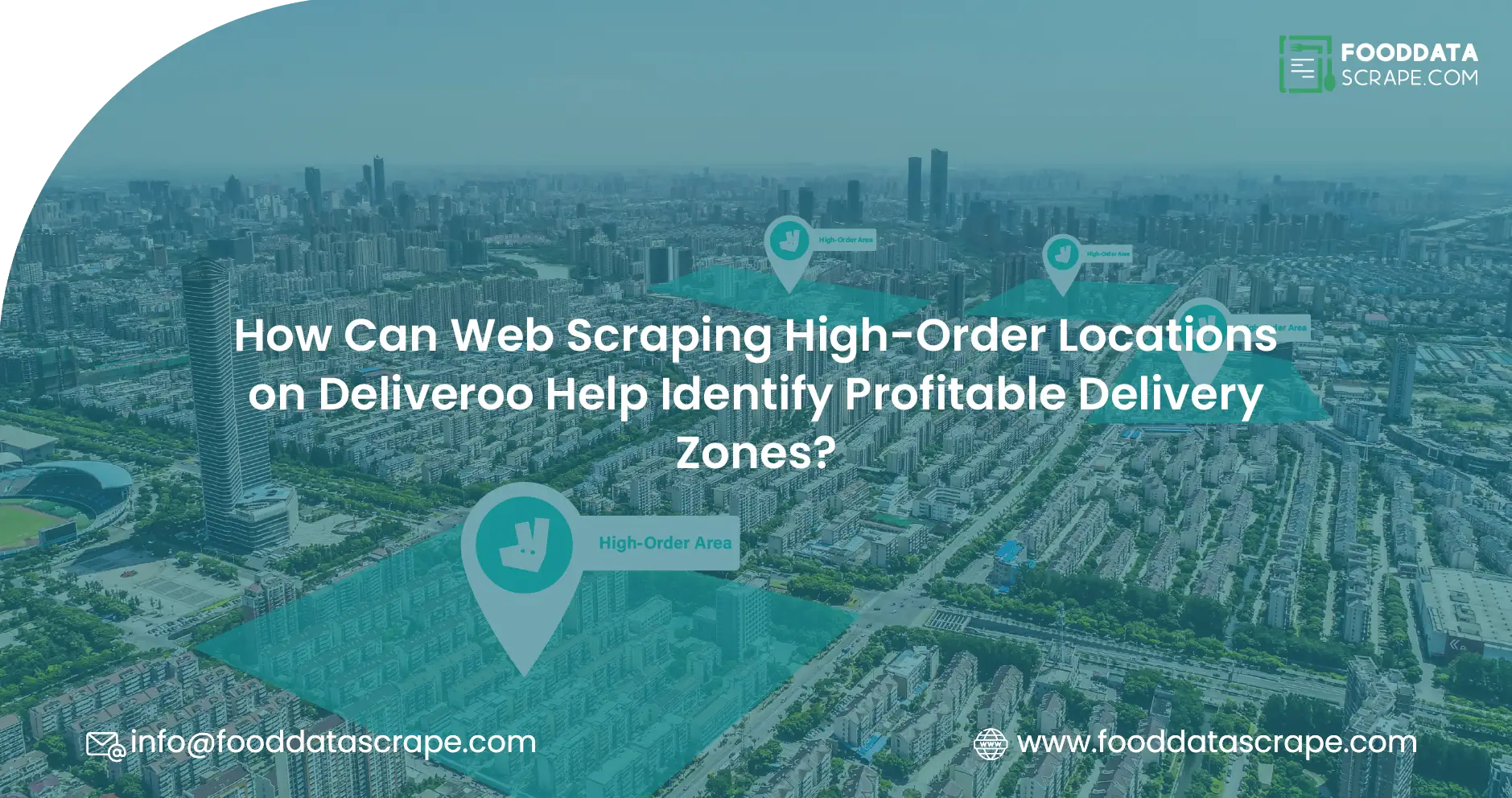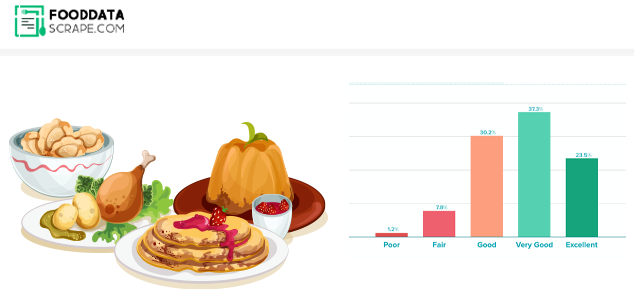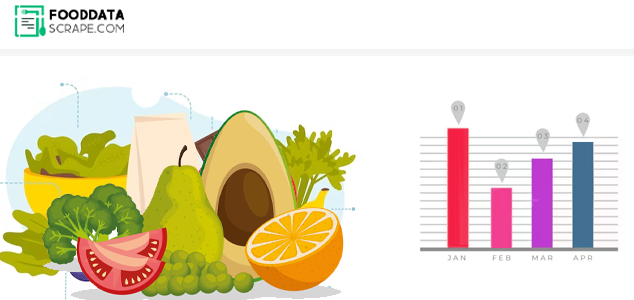Introduction
Web Scraping High Order Locations on Deliveroo has become a valuable method for understanding consumer behavior, optimizing food delivery services, and empowering businesses with data-driven decision-making. As Deliveroo continues to expand across multiple cities, identifying where users are ordering the most is crucial for restaurant owners, food tech analysts, and market researchers. Businesses need real-time insights into demand clusters, local food preferences, and peak ordering times to stay competitive.
Deliveroo Data Scraping for Popular Order Locations offers just that — a glimpse into high-performing areas that consistently generate substantial food delivery volume. Whether it's central London, Manchester, Dublin, or Birmingham, the data shows that food ordering behavior is highly concentrated around city centers, university hubs, and residential hotspots where working professionals live.
Scrape High-Demand Locations from Deliveroo by collecting live and historical data that identifies zip codes or postcodes with the highest frequency of orders. This information can highlight geographic patterns in consumer demand, such as which neighborhoods are ordering more fast food, vegan meals, or fine dining experiences. With accurate geotagged data, businesses can focus their marketing and operations strategies on these active delivery zones.
High-Order Locations: A Geographic Snapshot
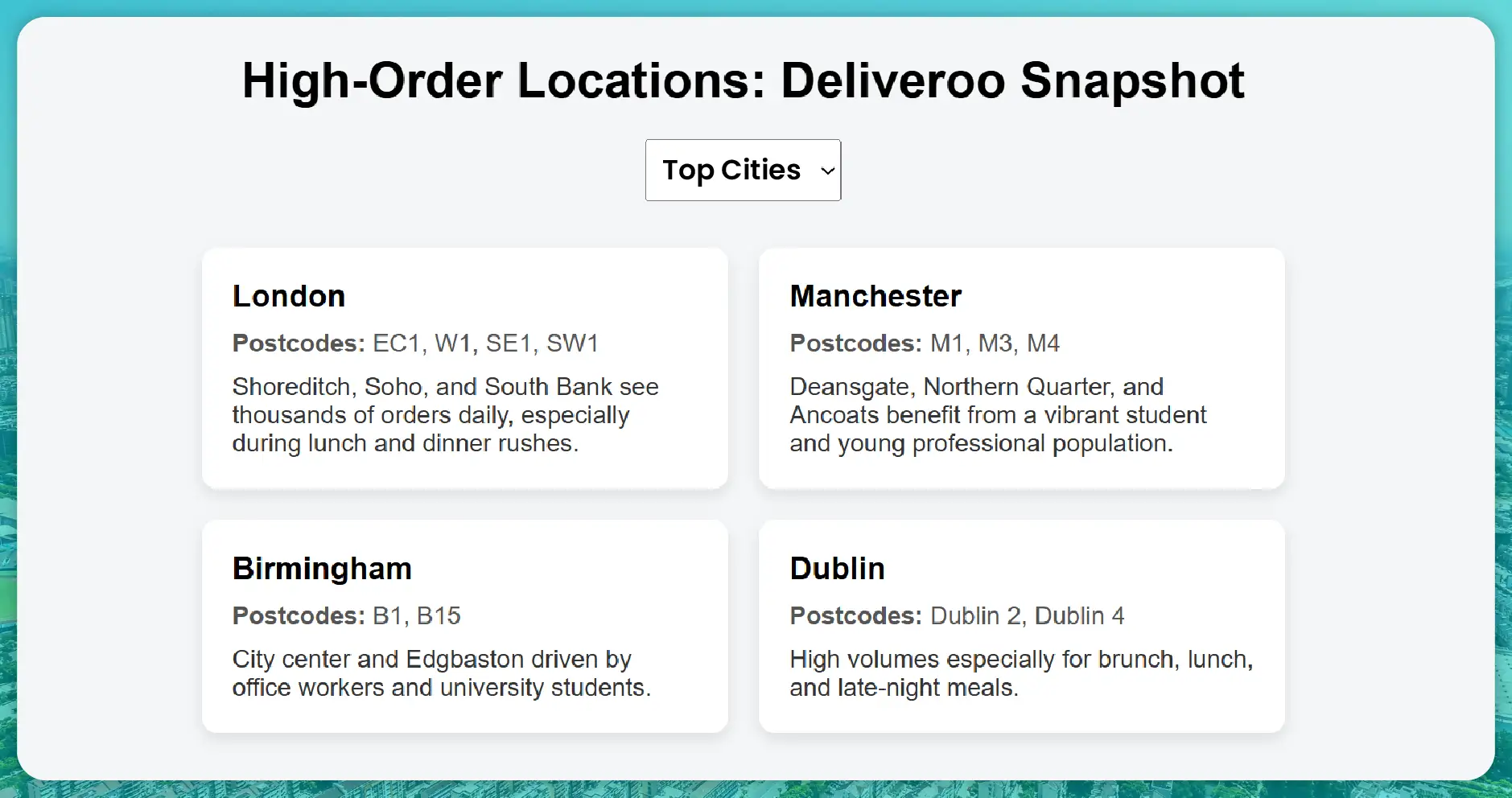
Let's look at Deliveroo order patterns across some key cities. Data indicates that areas with younger demographics, dense housing, and a high presence of office complexes or universities tend to be top performers.
London: Postcodes EC1, W1, SE1, and SW1 show high traffic. Neighborhoods like Shoreditch, Soho, and South Bank see thousands of orders daily, especially during lunch and dinner rushes.
Manchester: M1, M3, and M4 (covering Deansgate, Northern Quarter, and Ancoats) rank highest. A vibrant student and young professional population contributes to a steady stream of food deliveries.
Birmingham: The B1 and B15 areas near the city center and Edgbaston are top zones, driven by office workers and university students.
Dublin: Dublin 2 and Dublin 4 consistently record high volumes, especially for brunch, lunch, and late-night meals.
Deliveroo Location-Based Order Data Scraping enables businesses to collect data across these postcodes over time, helping to map seasonal trends and promotional impacts. For example, users may find that burger orders spike during the summer in suburban areas while healthy meal subscriptions surge during the new year in urban centers.
Why Does Location Matter in Food Delivery?
Understanding high-order zones on Deliveroo goes far beyond simply measuring the number of food deliveries in a given area. Location-based data offers a strategic advantage by revealing more profound insights into customer behavior and market potential. This geographical intelligence can be used to refine multiple aspects of food delivery operations, including:
Optimized Delivery Routes: By identifying postcodes or zones with consistently high order volumes, delivery companies can streamline logistics. This includes clustering deliveries to reduce travel time, enhancing driver efficiency, and minimizing operational costs. For example, if a particular street within SE1 frequently generates multiple lunch orders, a hub-and-spoke routing model can be implemented to serve it quickly.
Targeted Ad Placements: Hyperlocal advertising becomes far more effective when driven by granular location data. Brands can focus digital and social media campaigns in specific neighborhoods known for their high engagement with food delivery platforms. If data reveals that users in Dublin 4 often order on weekends, a restaurant can launch time-sensitive promotions (like "Saturday Brunch Deals") for that area only, boosting ROI on ad spend.
Restaurant Partner Expansion: Delivery platforms like Deliveroo can use high-order zone data to identify where there's rising demand but limited restaurant availability. This insight helps onboard new restaurant partners or launch ghost kitchens in underserved yet active markets. For instance, if Birmingham's B3 postcode shows increasing demand for Thai food, but there are few providers, Deliveroo can invite more Thai establishments to expand or open satellite kitchens.
Cuisine-Specific Trends in Certain Areas: Not all food is equally popular in every location. Location-based data highlights which cuisines are trending in different postcodes — whether it's sushi in Manchester's M1 or kebabs in London's E1. These trends allow restaurants to curate their menus accordingly or introduce new offerings based on local preferences.
By deploying advanced data strategies to Scrape Deliveroo Orders by Zip Code or Postcode, businesses can tap into a goldmine of hyperlocal insights. These insights empower brands to create neighborhood-specific promotions, fine-tune delivery coverage, and even personalize menu options. For instance, offering plant-based meal bundles in Dublin 4, where vegan food orders are on the rise, or launching exclusive "Late-Night Cravings" deals in London's W1, known for its vibrant nightlife and post-10 p.m. order surges.
In essence, shifting from a generic, one-size-fits-all strategy to a data-driven, location-tailored approach helps brands connect more meaningfully with customers, improve operational efficiency, and outpace competitors in the dynamic world of online food delivery.
Dishes That Dominate by Location
What people order also varies widely by region. This leads us to another rich opportunity:
Scrape Most Ordered Dishes on Deliveroo by Location to discover that:
- London's W1 area sees high demand for Asian fusion, bao buns, and poke bowls.
- Manchester's M4 postcode orders large volumes of pizzas and craft burgers.
- Birmingham's B1 often tops the charts with peri-peri chicken and shawarma.
- In Dublin 2, Thai curries and brunch items dominate, particularly over the weekend.
Data collection at this granularity allows restaurants to replicate successful dishes across different outlets or tailor their menus to suit a neighborhood's palate better.
Weekly and Seasonal Ordering Patterns
Deliveroo's traffic isn't static. Weekends and weather conditions play a significant role in order frequency.
Analyze Food Ordering Trends from Deliveroo by Area to reveal patterns like:
- Rainy evenings in Manchester correlate with a rise in comfort food orders (burgers, Indian curry).
- Sunny Sundays in London, driving smoothie bowl and brunch item sales.
- Exam seasons near university zones are pushing up caffeine and snack orders.
By syncing delivery volume data with local weather, events, and holidays, businesses can better predict demand and manage inventory, staffing, and promotions.
Tools and Technologies
The process of Web Scraping Deliveroo Food Delivery Data typically involves using Python-based tools like Scrapy, BeautifulSoup, or Puppeteer (for JavaScript-rendered pages). APIs, if available through third-party partners, can streamline the process and offer real-time access.
Deliveroo Food Delivery Scraping API solutions can be customized to extract not only location data but also menu availability, delivery time estimates, and pricing details. With the proper setup, businesses can track their competitors' performance in specific postcodes and assess the impact of new restaurant launches on local demand.
Datasets and Visual Insights
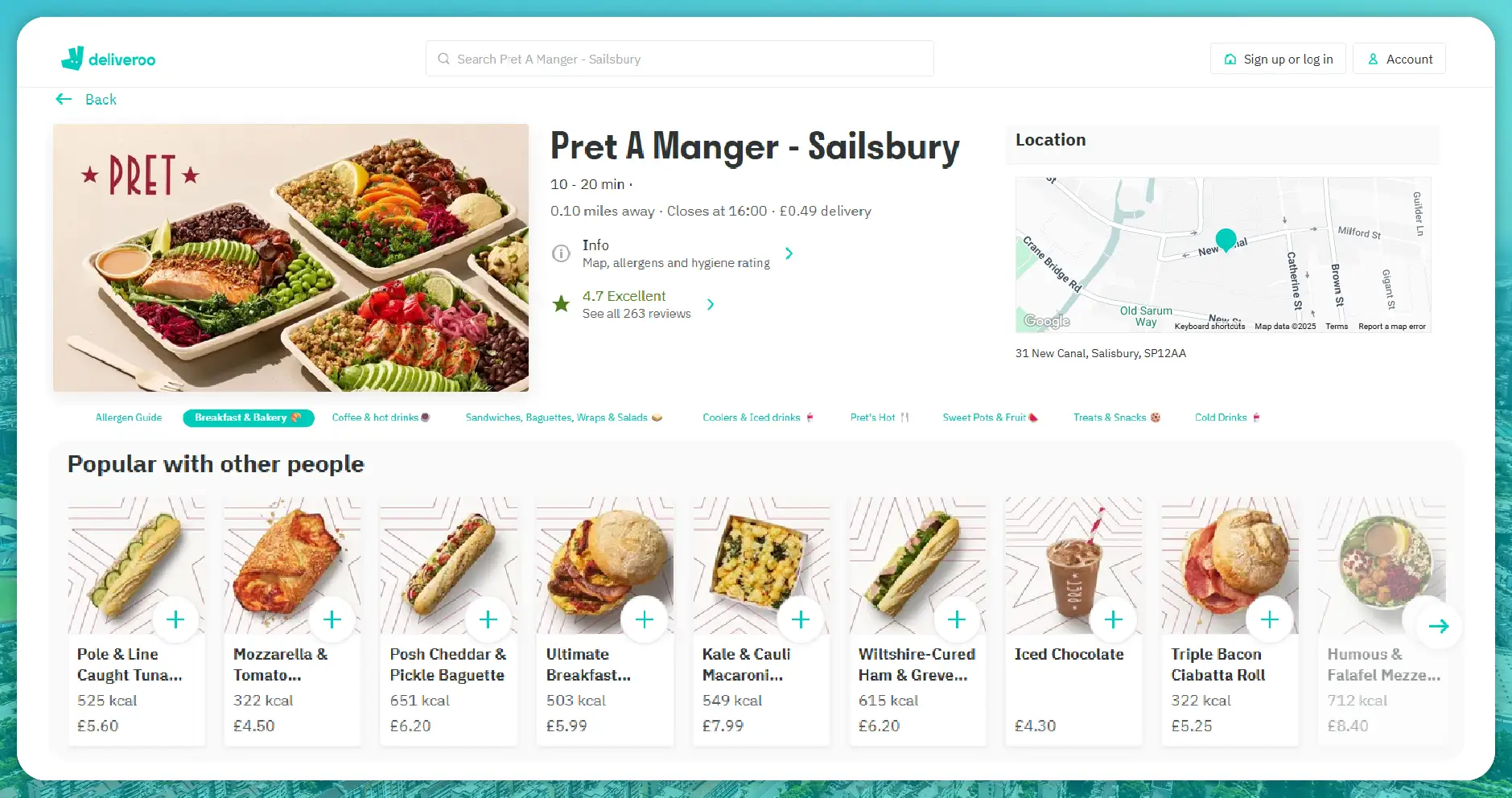
The outcome of this scraping initiative is the creation of a rich Deliveroo Food Dataset, which can be structured around:
- Location (postcode/city)
- Restaurant name
- Menu items
- Order volume
- Peak times
- Delivery estimates
- Ratings and reviews
With dashboards built in Power BI, Tableau, or Google Data Studio, users can transform raw data into visual stories that highlight business opportunities.
CTA: Unlock the power of location-based insights—start scraping high-demand areas on Deliveroo to drive smarter decisions today!
Who Benefits from Location-Based Deliveroo Data?
Location-Based Customer Behavior Analysis from Deliveroo is incredibly valuable across a wide range of stakeholders in the food delivery ecosystem. From restaurants to investors, having access to real-time, granular insights about where and what people are ordering empowers smarter, faster, and more profitable decisions. Here's how different players can benefit from high-quality location intelligence:
Restaurants: Traditional dine-in and delivery restaurants can make more informed expansion decisions by identifying underserved yet high-potential areas. Instead of opening a new branch based on assumptions, they can use data to spot specific postcodes with high order volumes but low competition. For example, suppose data scraping reveals that London's SE16 has a growing appetite for Asian street food but lacks adequate options. In that case, a restaurant can confidently enter that market to meet the demand head-on.
Cloud Kitchens: Also known as ghost kitchens or dark kitchens, these delivery-only establishments thrive on efficiency and location strategy. Using location-based order data, cloud kitchen operators can determine precisely where demand is strong for specific cuisines, enabling them to launch virtual brands with minimal risk. If the B15 postcode in Birmingham shows consistent late-night pizza orders, a virtual pizzeria can be strategically launched in or near that zone for quicker service and maximum reach.
Marketing Teams: One of the most potent uses of zip code-specific data is in crafting targeted promotional strategies. Marketing teams can develop hyperlocal campaigns tailored to the preferences of each area. For instance, if residents in Dublin 6 tend to favor healthy meal kits, promotional ads offering discounts on salads or plant-based meals can be geo-targeted to users in that region. This level of customization drives higher engagement and conversion compared to generic marketing efforts.
Investors: Venture capitalists and angel investors looking to fund the next big food tech venture can use this data to assess emerging markets. Scraping order volume, cuisine trends, and customer ratings in niche neighborhoods provides valuable clues about which areas are on the rise. Analyzing such micro-market data helps in identifying scalable business models, evaluating market saturation, and discovering first-mover opportunities.
Urban Planners: City planners and local governments can also derive meaningful insights from food delivery data. Patterns in order volume and food preferences can reflect broader socio-economic trends, nightlife dynamics, or even underserved areas in need of better amenities. For example, suppose a surge in evening food orders in a particular district is observed. In that case, it might indicate increased residential density or shifts in lifestyle, helping inform infrastructure planning, zoning decisions, or even public transportation needs.
All of these advantages are made possible through Food Delivery Data Scraping Services. These services eliminate the guesswork and provide access to accurate, structured, and real-time data across thousands of restaurants, menus, postcodes, and customer reviews. Businesses no longer need to rely solely on surveys or market assumptions. With the right scraping tools and analytics platforms in place, they can continuously monitor food ordering behavior, identify trends as they emerge, and take proactive actions to stay ahead of the competition.
Ultimately, data-backed decision-making is transforming how stakeholders in the food delivery ecosystem operate — from launching new brands and locations to fine-tuning marketing campaigns and evaluating investment opportunities.
Expanding Data Scope Beyond Orders
While order locations are key, advanced scraping can also offer insights into:
- Menu changes over time
- Price fluctuations
- Surge pricing behavior
- Ratings trends by restaurant and area
Restaurant Menu Data Scraping allows for competitive benchmarking and innovation in product development. Is a competitor offering a new sushi combo in SW1? You'll know. Is a major chain testing plant-based menus in B15? Your team can act accordingly.
Food Delivery Scraping API Services go one step further by offering programmable endpoints for consistent data refreshes, supporting machine learning models, and real-time dashboards.
Turning Data into Strategy

When this data is processed and contextualized, it becomes Restaurant Data Intelligence Services — a layer above raw scraping. These services translate numbers into insights: which dishes need better promotion, where to focus ad spend, and when to launch loyalty programs.
Location-based order analysis can also help in delivery fleet optimization, dynamic pricing models, and even negotiating better delivery terms based on order density.
How Food Data Scrape Can Help You?
Hyperlocal Market Insights: Businesses are using our scraping solutions to identify high-demand zones, enabling targeted menu offerings and promotions tailored to specific neighborhoods or zip codes.
Smarter Expansion Strategies: Location-based data helps restaurants and cloud kitchens select ideal areas for new outlets based on actual order volume and cuisine preferences.
Real-Time Demand Tracking: Our scraping tools provide up-to-date data on customer activity, allowing brands to respond quickly to shifts in food trends and local demand spikes.
Optimized Delivery Logistics: Companies use our data to streamline delivery routes, reduce delivery times, and enhance overall operational efficiency in busy zones.
Competitive Intelligence: Clients gain a clear view of competitor performance and regional customer behavior, giving them a strategic edge in saturated or emerging markets.
Conclusion
The future of food delivery hinges on precision. Knowing where customers order is just as vital as understanding what and when they order. Businesses leveraging Food delivery Intelligence services to analyze Deliveroo order patterns by zip code gain a strategic edge. This location-specific data empowers them to tailor menus, optimize delivery zones, and meet local consumer preferences more effectively. Scraping Deliveroo data goes beyond visibility—it fuels smarter decision-making and operational efficiency. With a dynamic Food Price Dashboard, companies can monitor pricing variations across regions, spot price-sensitive areas, and adjust strategies instantly. Access to accurate Food Delivery Datasets ensures every insight unlocks growth, agility, and competitive advantage in a fast-paced market.
If you are seeking for a reliable data scraping services, Food Data Scrape is at your service. We hold prominence in Food Data Aggregator and Mobile Restaurant App Scraping with impeccable data analysis for strategic decision-making.






















































































